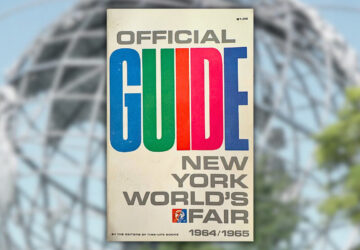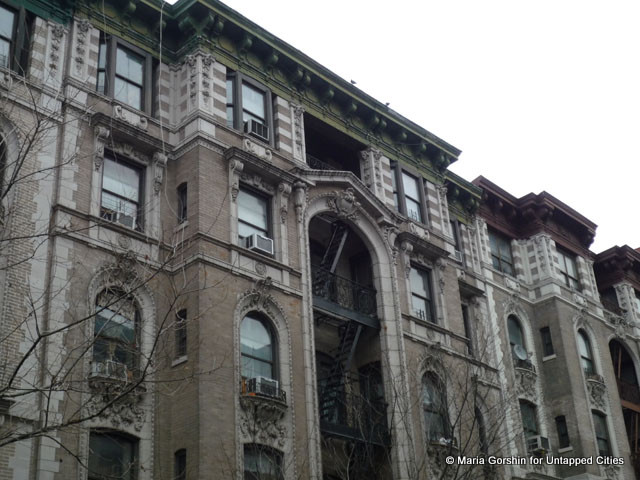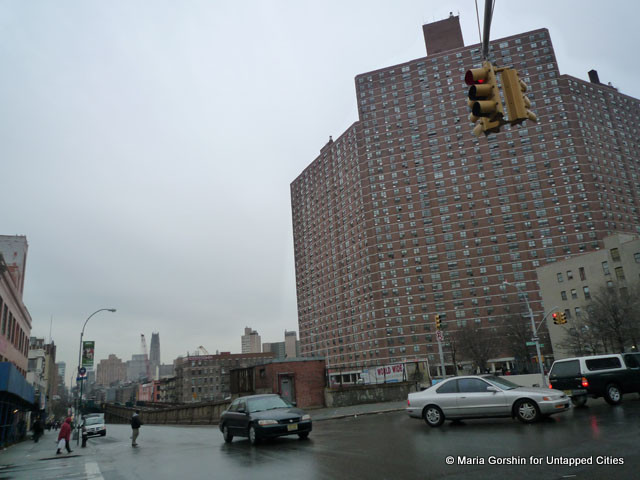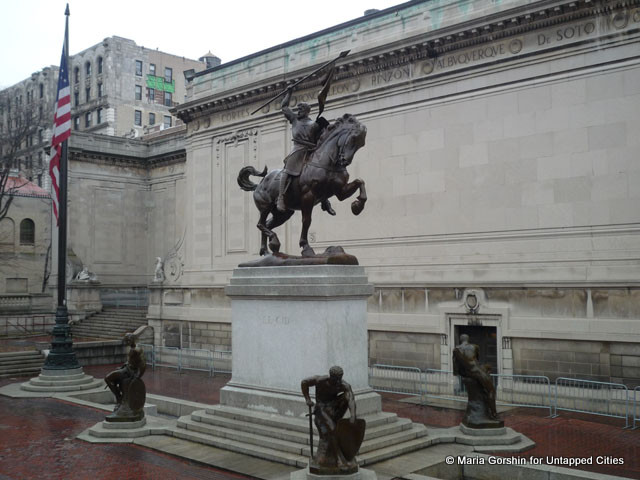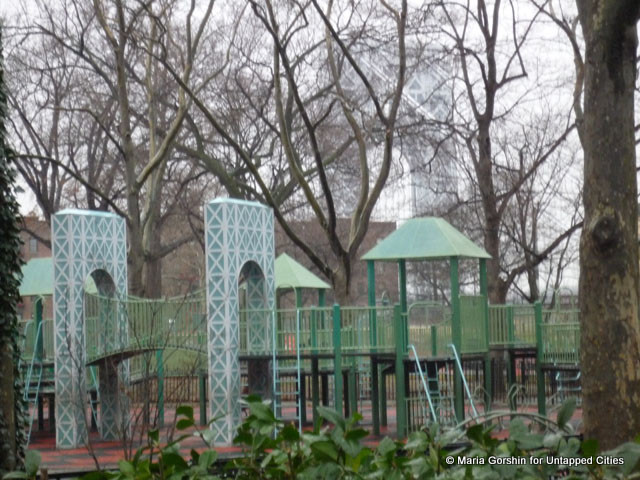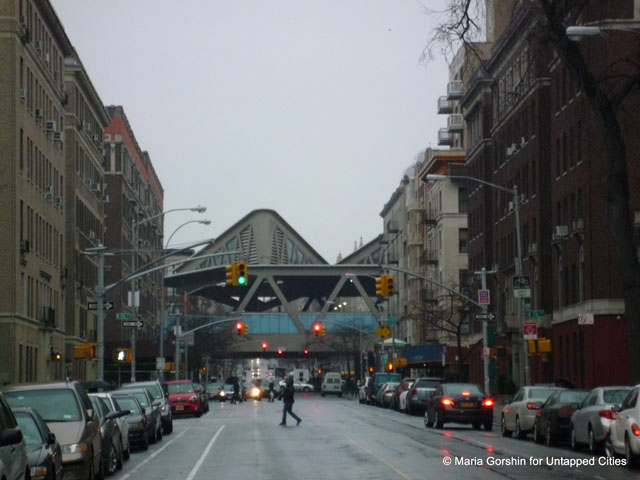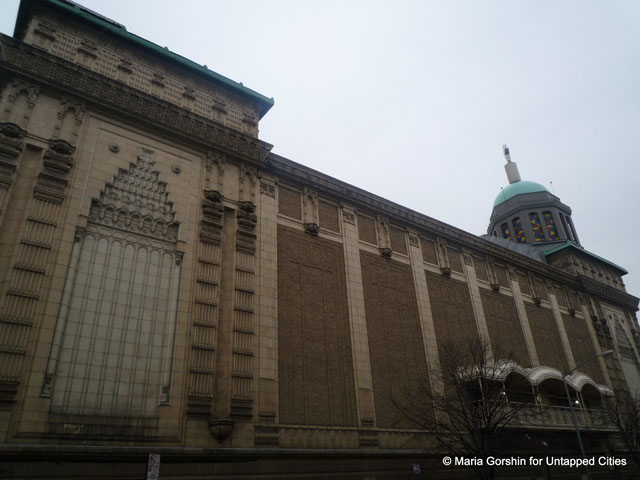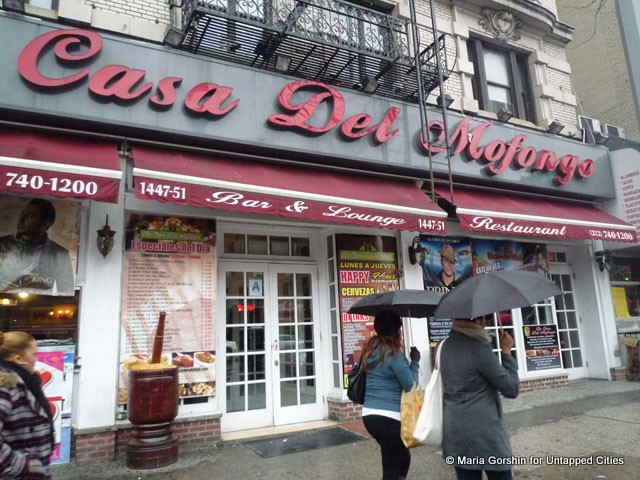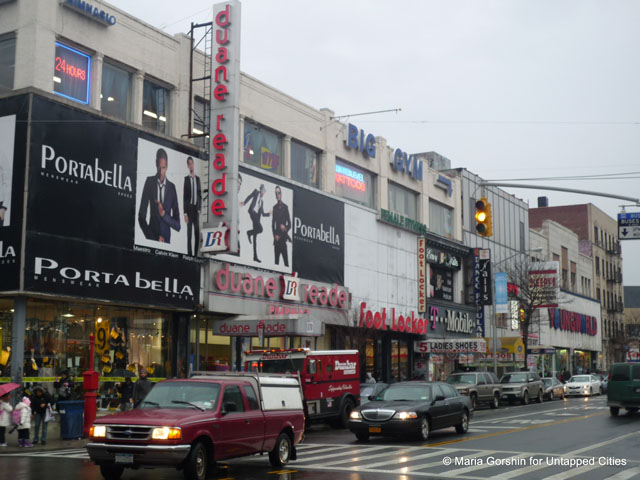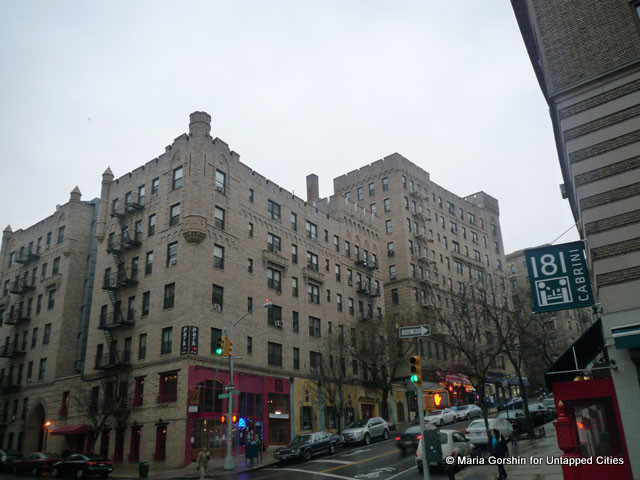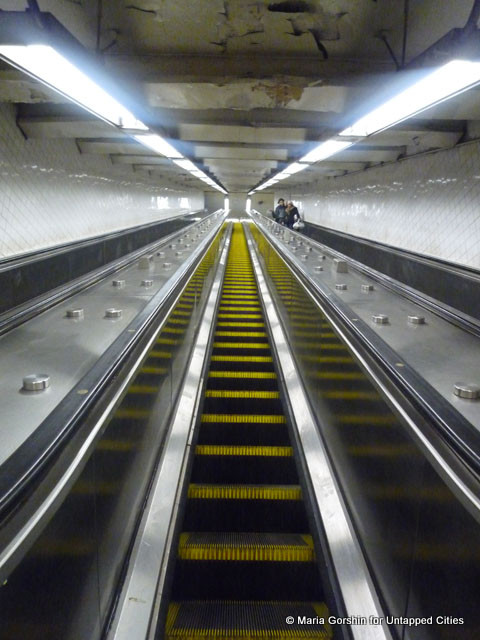The next time you find yourself with extra time on your hands aim for that most ignored stretch of Manhattan: that length of Broadway past Columbia University, beyond Morningside Heights and east of Harlem that appears as unmarked territory on even the most detailed tourist maps of New York City.
Take the #1 subway to 125th Street and Broadway. The old station is a historic landmark built in 1904. Once you cross under the station’s graceful steel arch and red canopied platforms begin walking north. It won’t be pretty at first but you will begin to see a side of the Big Apple that never makes the guidebooks. A bleak corridor of discount stores and rundown housing will make you wonder why you made the journey. Don’t be discouraged — look closely and let Upper Manhattan reveal itself to you at its own pace.
At the top of a gentle incline you reach 135th Street where the elevated trains that run along Broadway go underground. The vista opens up to something you rarely see in Manhattan — open sky. In this part of Manhattan few buildings rise as tall as 3333 Broadway, a complex of four buildings and one 35-story edifice.
Before you continue walking, stop and take a good look at the blighted valley you are leaving behind. The area, known as Manhattanville, was once a village dotted with farms before it became a bustling town crowded with sailors, merchants, shops and hotels. Beginning in 2015, Columbia University will expand toward this section of Broadway bringing new construction and vast change to the area.
Welcome to Hamilton Heights, named after Alexander Hamilton who lived in this section of New York City when it was still a sleepy rural outpost of fashionable Manhattan to the south. Today little evidence remains of Hamilton Height’s Colonial past. Instead the lively rhythms of reggaeton and salsa greet you as you meander from crowded discount stores and Latin bodegas to Dominican pastry shops. Look east and west off Broadway and you’ll find elegant brownstones and graceful, ornamented building lining quiet side streets. The availability of spacious apartments and reasonable rents has attracted actors, artists, teachers and professors to this section of Manhattan.
Look east and west off Broadway and you’ll find elegant brownstones and graceful, ornamented building lining quiet side streets. The availability of spacious apartments and reasonable rents has attracted actors, artists, teachers and professors to this section of Manhattan.
At 155th Street you will come upon one of the highest hills in Hamilton Heights as it rises from the Hudson River toward Broadway where Trinity Church Cemetery spans two sides of the avenue. Cross to the west side of Broadway to visit The Hispanic Society of America at 163 West 155th Street. Past the elegant sculpture garden you can gaze at a Goya and visit the museum’s hushed galleries before pressing on toward Washington Heights.
From 155th Street to 165th Street it’s more mom & pop shops than chain stores but the overall feeling is the same between the two types of businesses — faded, disarrayed and commercial. While the rest of Manhattan seems to be in a hurry to get places, this part of Uptown seems to have little reason to rush. At every corner men gather in groups to talk and watch the day go by. People stand outside of checks cashed locations and linger near storefronts occupied by doctors – specialists in diabetes and heart disease. Still there is much laughter, much music, shouted greetings between neighbors and everywhere people helping each other get by: a group of young men work together to repair an old car while nearby a woman teaches an old man in a wheel chair how to use an international calling card.
At 165th Street Uptown perks up. That’s where The Malcolm X & Dr. Betty Shabazz Memorial and Education Center and the Columbia University Medical Center flank Broadway, both standing proud, almost demanding that everyone nearby do the same — hurry, move, achieve. Suddenly a coffee house appears on the horizon, the first one in 40 blocks, and soon a Starbucks comes into view.
Veer off Broadway near 175th Street for a peek at the Hudson River and the George Washington River to the west. Spacious apartments along this stretch of Manhattan are accompanied by fabulous river views and still reasonable rents. Only 15 minutes by A train from Columbus Circle you can still find a one-bedroom apartment for $1,500 per month.
In a park along Wadsworth Avenue you’ll find a playful replica of the George Washington Bridge.
In the distance you’ll see the George Washington Bridge Bus Station, sister to the Port Authority Bus Terminal at 42nd Street. The station was built in 1963 and designed by renowned Italian engineer Pier Luigi Nervi.
Once back on Broadway at 175th Street you’ll be face-to-face with the Palace Cathedral, built in 1930 as one of a series theaters for Loews.
In this elaborate building topped by a cupola, New York’s famous Reverend Ike ruled the pulpit from the 1970s through 2009. On a recent visit, a farmers’ market nearby offered mostly discount cleaning products and medicines: $3 for Thera-Flu on a cold, rainy day.
Crowds of children pour onto the sidewalks after three o’clock, adding the music of their giggles to the rumble of traffic on Broadway. Little girls’ bright pink backpacks and purple overcoats compete with the bright signage that dominates St. Nicholas Avenue, a lively shopping and dining destination located one block east of Broadway.
After a bit more zigzag exploration near 181st Street and Broadway, continue north toward Inwood to visit Fort Tryon Park where you can visit The Cloisters Museum and Gardens or refuel with cocktails and an early dinner at Bette Midler’s Washington Heights venue, New Leaf Restaurant and Bar.
As an alternative, continue west on 181st Street instead where gaudy shops and discount stores give way to gentrified taste: gluten-free Italian dining, a sushi restaurant and a wine boutique.
Make a right onto Fort Washington Avenue to visit Bennet Park and travel through Manhattan bedrock toward the A train via elevators that have been in operation since 1932. On the other hand, you may want to see the George Washington Bridge from one of several overlooks near the Hudson River just one more time before you end your tour.
Back on Broadway and 181 Street, head down to the A train (the subway that can have you in Mid-town in 15 minutes) by riding down one of the longest escalators in the New York subway system. Emerge at Columbus Circle amazed that you’ve discovered another Manhattan, one that has been there all along.
Get in touch with the author @citygirlwrites


